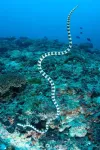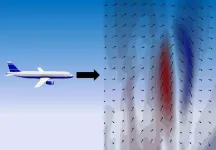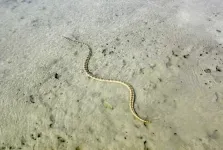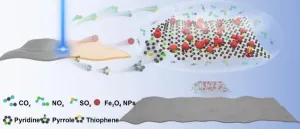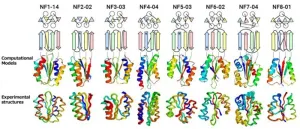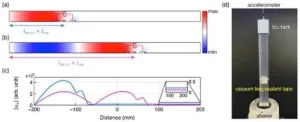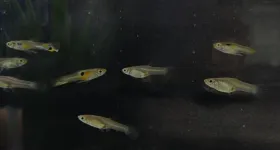(Press-News.org) A new paper in Genome Biology and Evolution, published by Oxford University Press, finds that the annulated sea snake, a species of venomous snake found in ocean waters around Australia and Asia, appears to have evolved to see an extended palette of colors after its ancestors lost that ability in response to changing environments.
Color vision in animals is primarily determined by genes called visual opsins. While there have been multiple losses of opsin genes during the evolution of tetrapods (the group including amphibians, reptiles, and mammals), the emergence of new opsin genes is extremely rare. Before this study, the only evolution of new opsin genes within reptiles appeared to have occurred in species of Helicops, a genus of snake from South America.
This study used published reference genomes to examine visual opsin genes across five ecologically distinct species of elapid snakes. The history of elapids, a family of snakes that includes cobras and mambas in addition to the annulated sea snake, presents an opportunity to investigate the molecular evolution of vision genes. Early snakes had lost two visual opsin genes during their dim-light burrowing phase and could only perceive a very limited range of colors. However, some of their descendants now occupy brighter environments; two elapid lineages have even moved from terrestrial to marine environments within the last 25 million years.
Researchers here found that the annulated sea snake possesses four intact copies of the opsin gene SWS1. Two of these genes have the ancestral ultraviolet sensitivity, and two have evolved a new sensitivity to the longer wavelengths that dominate ocean habitats. The study’s authors believe that this sensitivity may provide the snakes with better color discrimination to distinguish predators, prey and/or potential mates against colorful marine backgrounds. This is dramatically different from the evolution of opsins in mammals like bats, dolphins, and whales during ecological transitions; they experienced further opsin losses as they adapted to dim-light and aquatic environments.
“The earliest snakes lost much of their ability to see color due to their dim-light burrowing lifestyle,” said the paper’s lead author Isaac Rossetto. “However, their sea snake descendants now occupy brighter and more spectrally-complex marine environments. We believe that recent gene duplications have dramatically expanded the range of colors sea snakes can see. For reference, us humans have a similarly expanded sensitivity to colors, while cats and dogs are partially color-blind much like those early snakes.”
The paper, “Functional Duplication of the Short-Wavelength-Sensitive Opsin in Sea Snakes: Evidence for Reexpanded Colour Sensitivity Following Ancestral Regression,” is available (at midnight on July 12th) at: https://academic.oup.com/gbe/article-lookup/doi/10.1093/gbe/evad107.
Direct correspondence to:
Isaac Rossetto
PhD Candidate – Sea Snake Evolution
The University of Adelaide
North Terrace, Adelaide, South Australia 5005, AUSTRALIA
isaac.rossetto@adelaide.edu.au
To request a copy of the study, please contact:
Daniel Luzer
daniel.luzer@oup.com
END
Sea snakes may have evolved to see colors again
2023-07-12
ELSE PRESS RELEASES FROM THIS DATE:
Supercomputer used to simulate winds that cause clear air turbulence
2023-07-12
A research group from Nagoya University has accurately simulated air turbulence occurring on clear days around Tokyo using Japan’s fastest supercomputer. They then compared their findings with flight data to create a more accurate predictive model. The research was reported in the journal Geophysical Research Letters.
Although air turbulence is usually associated with bad weather, an airplane cabin can shake violently even on a sunny and cloudless day. Known as clear air turbulence (CAT), these turbulent ...
Sea snake vision evolved to regain color
2023-07-12
An international team of scientists examining the genetic history of sea snakes have found that the species has enhanced their colour vision in response to living in brighter and more colourful marine environments.
“Our research has found that the annulated sea snake possesses four intact copies of the opsin gene SWS1,” said PhD candidate Isaac Rossetto, from the University of Adelaide’s School of Biological Sciences who led the study.
“Two of these genes have the ancestral ultraviolet sensitivity, and two have evolved a new sensitivity to the longer wavelengths that dominate ocean habitats.
“The earliest ...
Scientists developed 180% relative bandwidth microwave absorber by ultrafast UV laser
2023-07-12
Scientists from Chinese Academy of Sciences Ningbo Institute of Materials Technology and Engineering, National Physical Laboratory (UK), The University of Manchester (UK) and National University of Singapore have developed a new approach, published in International Journal of Extreme Manufacturing (IF: 14.7), to fabricate a specifically designed wideband microwave absorption metamaterial with well-controlled electrical and magnetic characteristics on a polyethylene terephthalate (PET) substrate using ultraviolet (UV) laser irradiation.
The process involves using a UV laser to precisely control the characteristics of 2-D pattern on a specially formulated donor ...
Beyond nature's imagination: Scientists discover extensive array of protein folds unexplored in nature
2023-07-12
A groundbreaking study has shed new light on the astonishing diversity of protein structures and their folds in nature. Researchers set out to reveal the extent to which nature has explored the vast landscape of possible protein topologies. The results have unveiled an astounding array of unexplored protein folds, expanding our understanding and uncovering the depth of the protein universe.
This research has been published in the journal Nature Structural and Molecular Biology on July 3, 2023.
Proteins, ...
Bound states in the continuum is possible in the acoustoelastic coupling
2023-07-12
Let’s imagine a hypothetical scenario where two individuals are gripping a rope, each holding one end. Person A proceeds to shake the rope in an up-and-down motion, thus generating a propagating wave that travels towards person B. Now, if person C, positioned between person A and B, engages in a comparable frequency of waving motion as that of the rope’s wave, could the wave be redirected back to person A rather than reaching person B? Initially, this situation appears implausible, as person C does not physically ...
Pre-operative exercise substantially helps with recovery – study
2023-07-12
Policy-makers are being urged to take notice of a University of Otago study that confirms that undertaking a short programme of high intensity interval training before surgery can substantially help with recovery.
The study, published in the journal Surgery, reviewed and analysed 12 studies including 832 patients who had undertaken preoperative high-intensity interval training. Such training involves repeated aerobic high-intensity intervals at about 80 per cent of the maximum heart rate followed by active recovery.
Lead investigator Dr Kari Clifford says the study included all types of major surgeries – those expected ...
Scientists developing way to make cheaper Lithium batteries
2023-07-12
Lyon, France: Lithium is becoming the new gold, with rocketing use in lithium-ion batteries in electric cars, computers, and portable devices driving up the price and affecting the supply of the relatively rare metal. Scientists are on the verge of developing a way of using sodium to replace some of the lithium, so driving down costs and guaranteeing the supply.
Recently scientists have looked at dispensing with lithium altogether and instead using sodium or other elements in high quality batteries. Sodium is cheaper and more available (it’s found in seawater, as sodium chloride), but they have ...
Plant Biology 2023 plenary closeup: Connecting the dots
2023-07-12
This year’s Presidential Symposium places plant science within a larger context, spotlighting the connections between plants and humanity. Accordingly, ASPB President Gustavo MacIntosh selected speakers with a broad array of backgrounds and expertise. Yet when the Presidential Symposium takes place Saturday, August 5, at 1:30 pm, you’ll find they agree on critical fundamentals.
“Humans are totally dependent on plants for food,” began Barbara Schaal of Washington University.
“When it comes to agriculture, plants and people are really ...
Tiny fish surprise scientists in ‘volunteer’s dilemma’
2023-07-12
Tiny fish called Trinidadian guppies have surprised scientists when faced with the so-called “volunteer’s dilemma”.
The idea of the dilemma is that individuals are less likely to cooperate if they are in a large group.
Various studies have demonstrated this in humans – but guppies appear to buck the trend.
In the new study, by the University of Exeter, guppies in larger groups were more likely to risk approaching a predator to gather information for the shoal.
“When faced with a possible predator, guppies have to balance risks,” said Rebecca Padget, from Exeter’s Centre for Research in Animal Behaviour.
“At least one ...
Six research centers will lead innovation towards a fully sustainable energy sector
2023-07-12
An investment of £53 million in six research centres will drive forward change in the energy system and help to meet the UK’s net zero target by 2050.
The energy research centres will boost knowledge, create innovative green technologies and reduce demand for energy to achieve greener, cleaner domestic, industrial and transport energy systems.
UK Research and Innovation (UKRI) has awarded:
£15 million for a new Energy Demand Research Centre that will provide solutions for energy demand reduction, understand the impact on consumers, and enable equitable policy decision-making.
£17.5 ...
